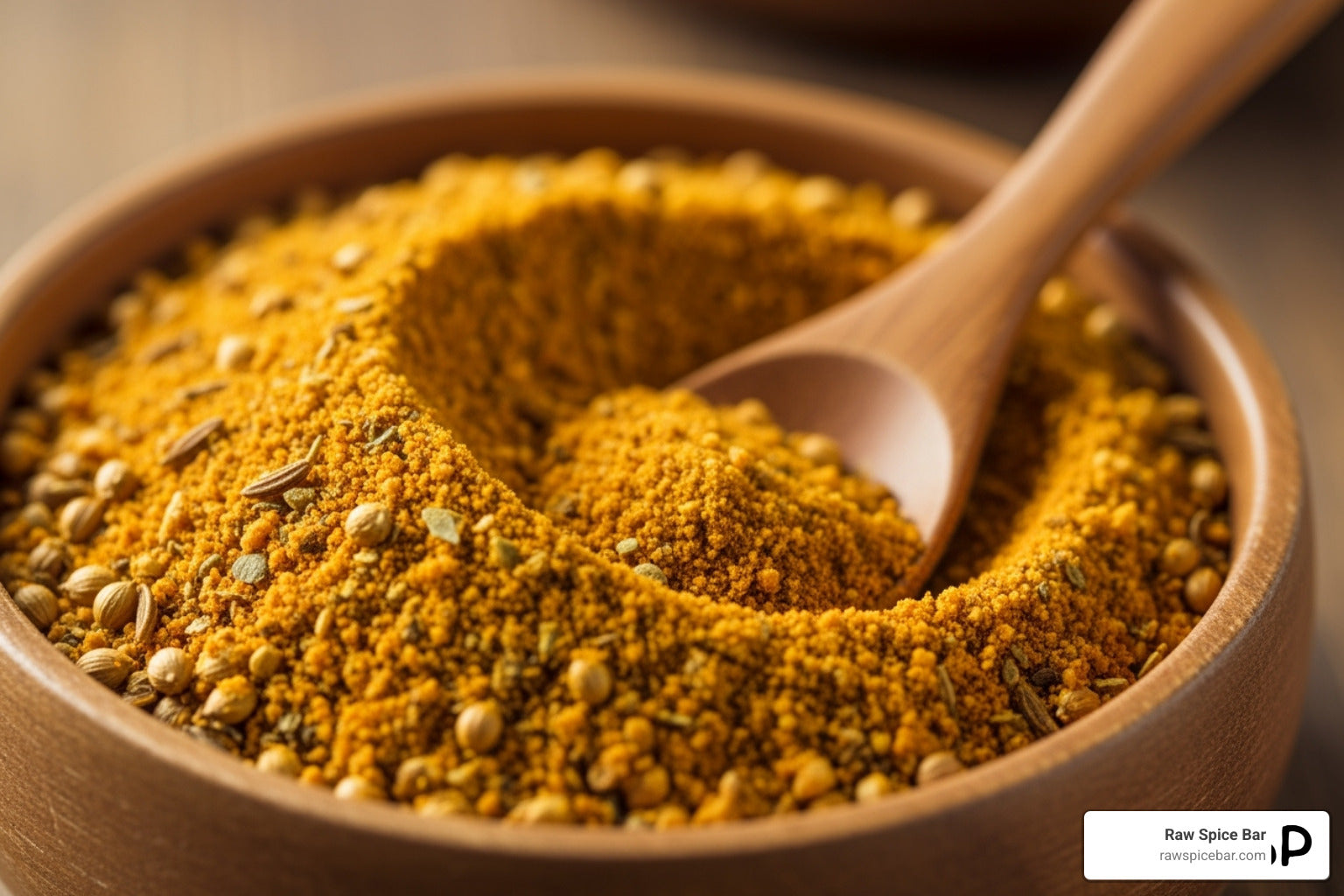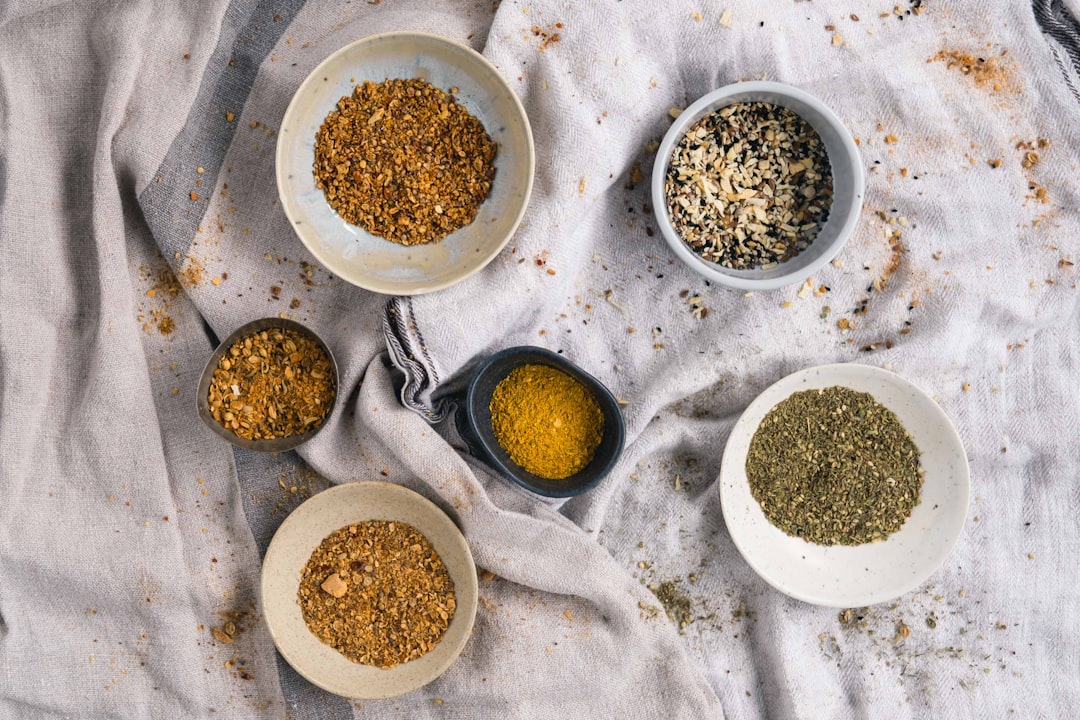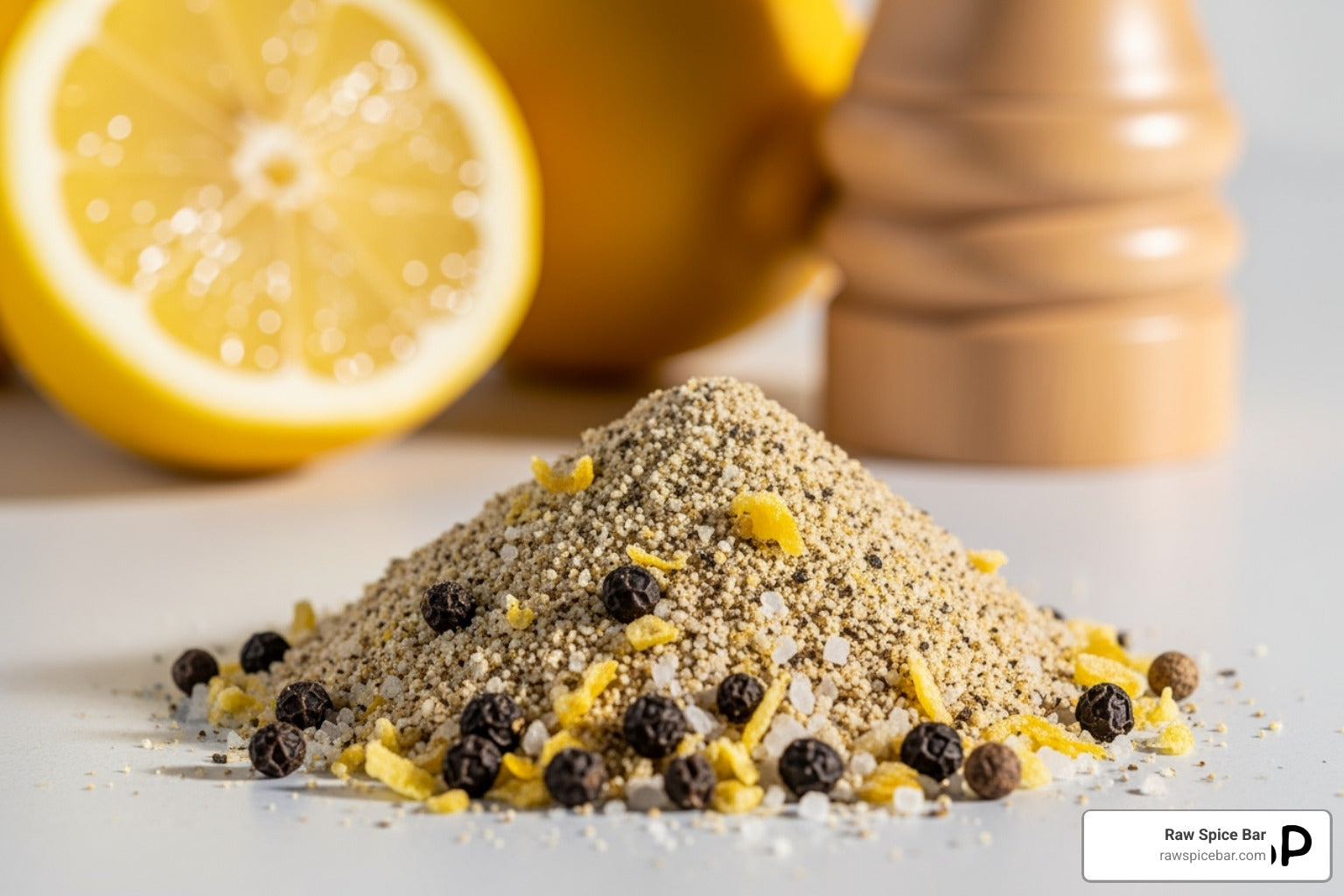Cooking becomes an adventure when you introduce fresh spice blends into the mix. These vibrant blends bring out the natural flavors of your ingredients, making each dish a memorable experience. When you cook with spices like these, every meal feels like stepping into a different part of the world, filled with unique aromas and tastes that liven up your everyday dishes.
At Raw Spice Bar, we craft spice blends that help you travel globally through your kitchen. Our blends are made with fresh, authentic ingredients, ensuring that each packet is packed with rich and delicious flavors. With our global spice subscription, you receive new spice blends paired with recipe cards every month, letting you easily and creatively enhance your cooking.
The Importance of Fresh Spice Blends in Cooking
Fresh spice blends play a crucial role in elevating your cooking. They bring out intense flavors, offer health benefits, and connect you to a rich history of culinary traditions. By using fresh spices, you can transform ordinary meals into extraordinary experiences.
Enhancing Flavor Profiles
Fresh spice blends greatly enhance the taste of your dishes. Unlike store-bought spices that can be dull, fresh blends offer vibrant, robust flavors. The reason fresh blends stand out is due to the quality of the ingredients. Fresh spices retain essential oils and natural flavors that fade in older or improperly stored spices. As a result, they bring out a depth of flavor that adds complexity to dishes. Whether you're sprinkling a blend over roasted vegetables or adding a pinch to a stew, the impact is noticeable and delightful.
Health Benefits of Fresh Spices
Incorporating fresh spices into your diet can offer numerous health benefits. Fresh spices, like turmeric and black pepper, are known for their active compounds that support well-being.
Fresh spices are often packed with antioxidants, which provide health benefits such as reducing inflammation and boosting immunity. When you use fresh blends, you are also likely avoiding added salt or artificial ingredients, making your meals healthier. This makes fresh spice blends an excellent choice for those interested in both flavor and health.
Cultural Significance of Spice Blends
Spice blends hold significant cultural value and tell a story of culinary heritage. Each blend has historical roots and reflects the cuisine of a particular region. For example, a Creole blend might bring the energetic ambiance of New Orleans, while a Greek blend might capture the essence of the Mediterranean.
Selecting the Right Spices
Choosing the right spices can elevate your cooking to new heights. Understanding different flavor profiles, considering seasonal options, and ensuring quality are key factors. These elements will help you create vibrant, flavorful dishes that delight the senses.
Understanding Flavor Components
Different spices bring unique flavors to a dish, and knowing these nuances is essential. For example, cumin offers warmth and earthiness, while paprika adds a sweet, smoky touch. You should consider how these spices interact with ingredients like meats or vegetables to create a balanced dish.
Experimentation is encouraged as well. Don’t hesitate to try uncommon combinations. Think of mixing cinnamon with a savory dish to add complexity. Recognizing how aromas enhance flavors can transform simple meals into culinary delights.
Seasonal Spice Selection
Seasonal spices ensure that meals are fresh and exciting. For instance, in the fall, you might lean towards warming spices like nutmeg and clove. In summer, lighter options such as basil and mint can brighten salads or drinks. Seasonal selection supports not only flavor but also nutrition.
By aligning spice choices with each season, you tap into nature's bounty. This practice brings authenticity to your meals and enhances the overall dining experience. It’s about embracing the vibrant tastes available during different times of the year.
Sourcing Quality Spices
The quality of your spices greatly impacts your cooking. Fresh, high-quality spices deliver the best flavors, making every meal more enjoyable. We specialize in creating authentic spice blends from the freshest ingredients around the world.
Creating Custom Spice Blends
Creating custom spice blends at home allows you to tailor flavors to your taste. With a few simple guidelines, you can explore balancing flavors and using traditional mixes. This approach opens up the possibilities for innovative combinations that elevate your culinary creations.
Balancing Flavors and Textures
When creating spice blends, balancing flavors is crucial. You want a mix of savory, sweet, spicy, and umami elements. Start with a base of one or two main spices, then add secondary spices to complement them.
Example Balance:
|
Type |
Example Spices |
|
Base |
Paprika, Cumin |
|
Sweet |
Cinnamon, Nutmeg |
|
Spicy |
Cayenne, Black Pepper |
|
Umami |
Dried Mushroom Powder |
Textures matter too. While some recipes call for fine powders, others might benefit from coarser textures like crushed pepper or sesame seeds.
Traditional Mixes and Their Uses
Traditional spice blends like garam masala or herbes de Provence have been perfected over generations. Each blend holds cultural significance and depth of flavor that enhances specific dishes.
-
Garam Masala: Common in Indian dishes, this blend includes spices such as cumin, coriander, and cardamom. It's often used in curries and stews.
-
Herbes de Provence: A mix of herbs like thyme and rosemary, this blend works well in roasted meats and vegetables.
These blends are easy to modify at home. Adjust the ratios to suit your palate for a personalized experience.
Innovative Combinations
Experimenting with spices leads to innovative blends. Combining unexpected spices can result in unique flavors that elevate your meal. Think about mixing ground ginger with chili powder for a sweet and spicy rub.
Example Combinations:
-
Citrus and Pepper: Dried citrus zest mixed with black pepper adds a fresh kick to grilled chicken.
-
Lavender and Saffron: Floral notes blend beautifully with rice dishes.
Techniques for Maximizing Freshness
To keep your spices fresh and full of flavor, you should focus on proper storage, grinding them when needed, and preserving their aroma and potency. These techniques ensure your spices maintain their quality and enhance your cooking adventures.
Proper Storage Solutions
Storing spices in a cool, dark place helps maintain their quality. Light and heat can cause spices to lose their flavor quickly.
Airtight containers are essential for keeping out moisture and air, both of which can degrade the quality of spices. Glass jars with tight-fitting lids are ideal options. You should label your containers with the date you purchased the spices to easily track their freshness.
For added convenience, keep frequently used spices in a spice rack or drawer. This organization makes it easy to find what you need without exposing the spices to excessive light or air.
Grinding Spices on Demand
Grinding spices just before use is one of the best ways to maximize their flavor and aroma. Whole spices like cumin, coriander, and peppercorns can be ground using a spice grinder or mortar and pestle.
Grinding releases essential oils, which hold much of the spice's flavor. By doing this on demand, you ensure that these volatile oils are as fresh as possible. This technique also allows you to adjust the texture of your spices, providing either a fine powder or a coarser grind.
Preserving Aroma and Potency
To maintain the potent aroma and flavor of spices, avoid storing them near the stove or in direct sunlight. Heat can reduce their strength. You might consider storing them in a pantry or kitchen cabinet away from appliances that generate heat.
Another tip is to keep spices away from moisture. Always use a dry spoon when measuring out your spices. This prevents clumping and preserves their texture and aroma over time.
Applying Spice Blends to Various Cuisines
Cooking with fresh spice blends can transform any meal into a flavorful experience. Whether you're infusing dishes with depth using exotic spices or creating unique fusion flavors, spice blends are key. In this section, discover how to integrate these spices effectively into your cooking techniques, marinades, and more.
Incorporating Spices in Cooking Techniques
When cooking, spices can be used in various techniques to enhance the natural flavors of your ingredients. For instance, toasting whole spices releases their oils and enriches their aroma. Stirring these into curries or stews can add layers of flavor.
For roasting meats or vegetables, mix your preferred spices with oil to coat your food evenly. As the dish cooks, the spices meld with the juices, resulting in a delicious depth of flavor.
Spices in Marinades, Rubs, and Sauces
Spices also excel in marinades, rubs, and sauces. Marinades combine spices with liquids like oil or vinegar, soaking meats or vegetables to penetrate deep flavors. A simple marinade can include garlic, lemon, and a spice blend, enhancing chicken dishes with global flair.
Rubs are dry mixes of spices applied directly to the surface of foods, like meats, to create a crust while cooking. For example, a mixture of paprika and cumin can give pork or beef a smoky, savory taste.
Consider using spice blends in barbecue sauces or salad dressings. The right blend can elevate a simple tomato-based sauce into a spicy masterpiece.
Fusion Flavors and Experimentation
Experimenting with spice blends allows you to create fusion dishes that combine characteristics of different cuisines. This can mean using a Mexican ancho chili blend in a traditional Italian pasta dish or a Middle Eastern za'atar to season Asian-style salads.
Fusion flavors offer creative freedom in the kitchen. By mixing different global spices, you can personalize dishes unique to your tastes.
Pairing Spices with Ingredients
Using spice blends effectively can transform meals, bringing out intense flavors and aromas. With the right combination, proteins, vegetables, legumes, and even sweet or acidic dishes can reach their full flavor potential. Let's explore how to pair spices with different ingredients for maximum taste impact.
Complementing Proteins with Spice Blends
Spices add depth to proteins like chicken, beef, and fish. A bright lemon-pepper blend pairs well with chicken, adding zest without overpowering the natural taste. Meanwhile, spicy Cajun seasoning can enhance shrimp and fish, offering a fiery kick and a hint of garlic. For beef, consider a robust and smoky barbecue rub. This blend brings out the savory flavors and creates a delicious crust.
Enhancing Vegetables and Legumes
Spices play a crucial role in enhancing the taste of vegetables and legumes. Roasted vegetables benefit from a sprinkle of herbes de Provence, which incorporates thyme, rosemary, and tarragon. This blend brings a fragrant and earthy note. Meanwhile, lentils and chickpeas can shine with a Moroccan spice mix that merges cumin, coriander, and cinnamon for warmth and complexity.
Balancing Spices with Sweetness and Acidity
Balance is crucial when using spices with sweet or acidic elements. A cinnamon and nutmeg blend enhances baked goods like apple pies, embracing the fruit's sweetness with warmth. For acidic dishes such as those with tomatoes or citrus, consider using a basil and oregano blend. This blend complements acidity and rounds out flavors.
Cooking Techniques for Spiced Dishes
Spice blends can transform a simple dish into an extraordinary one when used correctly. You can achieve intense flavor by choosing the right cooking methods. Here, we explore key techniques like slow cooking, roasting, and quick cooking that make spices sing in your meals.
Slow Cooking and Infusing Flavors
Slow cooking is excellent for deep flavors. Using spices in stews, soups, or braised dishes allows the ingredients to absorb the rich tastes. Over time, spices like cumin, coriander, or bay leaves release oils and essences that deepen flavor. This method is perfect for dishes that cook over hours and can even make a basic cut of meat more flavorful and tender.
You might notice how spices become more fragrant as they slowly cook. As they blend with the other ingredients, this technique is not only about patience but also about balance. Adding the right amount of spices is important, as too much can overpower, while too little might not make the dish shine.
Roasting and Baking with Spices
Roasting and baking are ideal for infusing spices into meats and vegetables. When you roast, the heat helps caramelize sugars and breaks down fibers in foods, making them more receptive to spices. Coating your dish with a blend before putting it in the oven creates a crispy, flavorful crust.
For example, rubbing chicken with a blend of paprika, garlic powder, and thyme before roasting enhances both taste and texture. This method is also perfect for root vegetables and grains. Baking bread with spices like cinnamon or nutmeg can turn an ordinary loaf into an aromatic masterpiece.
Quick Cooking Methods
Quick methods like sautéing and stir-frying are great for vibrant spice flavors. These techniques require high heat for a short time, which makes them ideal for aromatic spices that need only a little time to release their oils. Stir-frying vegetables with a touch of ginger or tossing shrimp in a chili mix delivers immediate results.
Adjusting Spice Levels for Palate and Dietary Needs
Using spice blends effectively involves adjusting flavors to suit different tastes and dietary needs. Whether you desire a milder dish or need to consider allergies, customization is key. With the right techniques, you can create meals that please your palate while meeting your dietary requirements.
Modifying Spiciness without Losing Flavor
You can adjust spice levels based on your preference for heat. For those who enjoy milder flavors, start by using smaller amounts of spicy ingredients like chili powder or cayenne pepper. Add them gradually, tasting as you go. If you've added too much, balance the heat with dairy products like yogurt or cream, which can mellow the intensity.
Alternatively, mix spices with neutral ingredients such as rice or potatoes to diffuse the heat. You may also want to consider substituting spicy components with flavorful but milder options, like paprika.
Allergy-Friendly Spice Alternatives
Navigating allergies while enjoying spices requires some creativity. When allergic to common spices like cumin or coriander, consider alternative ingredients to achieve similar flavors. For instance, a mix of ground caraway seeds or a hint of cinnamon can replace cumin’s earthiness in certain recipes.
If nutmeg or other common allergens are a concern, select blends specifically marked as allergen-free or choose to create your own mix. This ensures that your meals are not only delicious but also safe to enjoy.
Preservation and Long-Term Use of Spice Blends
Proper storage of spice blends ensures that your cooking remains flavorful for an extended period. Knowing how to freeze spices effectively and use dry canning or vacuum sealing techniques is essential. These methods help preserve the scent and taste, making your dishes taste rich and fresh.
Freezing Techniques for Spice Mixes
Freezing can help keep spice blends fresh by slowing down the loss of oils and flavors. Pack your blends in airtight containers or resealable bags to prevent moisture. Remove as much air as possible before sealing. Wrapping in foil adds an extra layer of protection.
Label the containers with the blend type and date. This process helps you use them before they lose potency. Spice blends frozen improperly may pick up unwanted odors or taste stale.
Dry Canning and Vacuum Sealing Methods
Dry canning and vacuum sealing are excellent methods for long-term spice storage. You can use vacuum sealers to remove air from bags containing spices. This reduces the chance of oxidation, helping to maintain flavor and aroma.
Mason jars can be used for dry canning. Fill them with your spice blend, place a lid, and vacuum-seal it if available. Store the jars in a cool, dark place to avoid exposure to sunlight and moisture. This method is beneficial for maintaining bulk spices over months.
Frequently Asked Questions
Creating flavorful dishes is easy when you use fresh spice blends that elevate your cooking. Explore essential spices, mixing tips, storage practices, and versatile blends that bring international flavors to your table.
What are the essential spices for creating a flavorful kitchen pantry?
Your pantry should include staples like paprika, cumin, coriander, and turmeric. These spices form the foundation of many delicious recipes and can be used to craft blends unique to various cuisines.
How does one create a balanced homemade spice blend?
To create a balanced blend, start with a base spice and add supportive spices in smaller amounts. Taste and adjust until you find a mix that suits your desired flavor profile, such as savory or spicy.
What are the best practices for storing and using spice blends to keep them fresh?
Store blends in airtight containers away from heat and light. Use them regularly to ensure freshness. Our spice blends at Raw Spice Bar are delivered fresh for the best taste.
Can you list some versatile spice blends suitable for a wide range of dishes?
Common versatile blends include garam masala, Italian seasoning, and taco seasoning. These blends can enhance a variety of dishes, adding depth and richness to your meals.
How do the combinations of spices in a blend enhance overall flavor depth?
Spice blends combine different flavor notes, such as sweet, savory, and spicy, to create a complex taste profile. This approach enriches dishes, making them more memorable and appealing.
What are some tips for first-time cooks when experimenting with seasoning blends?
Start small, adjust gradually to avoid overwhelming your dish with spices, and follow recipes as a guide. Be open to experimenting. Raw Spice Bar offers spice subscriptions with recipe cards to help you get started.




